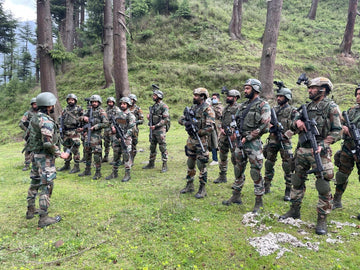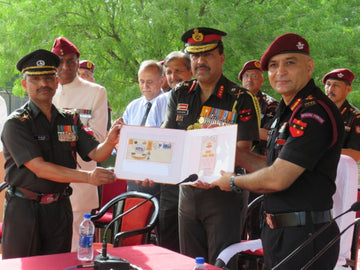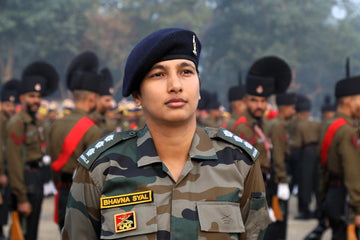In India, the allure of serving the nation through prestigious roles in the Indian Police Service (IPS) or as an Army Officer continuously attracts a multitude of aspirants. These professions not only demand a strong sense of duty and commitment but also offer promising career prospects, including salary packages that can significantly vary across ranks and departments. As candidates prepare to embark on their journeys, one critical question arises: Who earns more money—IPS officers or Army officers?
To answer this question thoroughly, we will delve into various factors including salaries, benefits, and the overall compensation package of both services. Ultimately, we aim to provide a comprehensive analysis that helps demystify the financial aspects of these esteemed careers.
Historical Context
The Indian Police Service (IPS) and the Indian Army have both evolved considerably over the years. The IPS, established under the Government of India Act of 1919, was created to maintain law and order and uphold the Constitution of India by serving the public good. Similarly, the Indian Army has a rich history, with roots tracing back to the 18th century, ultimately becoming an essential pillar of national security and integrity.
Both services reflect India's commitment to protecting its citizens, yet they serve distinctly different roles within the framework of governance and security. As such, there are nuanced differences in how they are compensated for their services, influenced by factors such as regional postings, risk levels, and the nature of work.
IPS Officer Salaries
Entry-Level Salary
Upon entry into the IPS, officers are typically designated as Deputy Superintendents of Police (DSPs). They begin with a basic salary of ₹56,100 per month. However, once various allowances such as Dearness Allowance (DA), House Rent Allowance (HRA), and Travel Allowance (TA) are computed, their gross salary can augment to approximately ₹79,662 per month.
Rank-Wise Salary Analysis
As officials rise through the ranks in the IPS, their earning potential significantly increases. Below is a detailed salary structure reflecting various ranks:
-
Deputy Superintendent of Police (DSP): ₹56,100
-
Additional Superintendent of Police (ASP): ₹67,700
-
Superintendent of Police (SP): ₹78,800
-
Deputy Inspector General (DIG): ₹1,31,000
-
Inspector General (IG): ₹1,44,200
-
Additional Director General (ADG): ₹2,05,000
-
Director General of Police (DGP): ₹2,25,000
The in-hand salary, after complying with deductions for Provident Fund, Income Tax, and similar contributions, tends to range from ₹50,000 to ₹2,00,000 per month, contingent on rank and posting location.
Army Officer Salaries
Entry-Level Salary
Like their IPS counterparts, Army officers commence their careers at a similar basic salary. A Lieutenant, the entry-level rank, can anticipate a base salary ranging from ₹56,100 to ₹61,300 per month, again accompanied by additional allowances.
Rank-Wise Salary Analysis
The salary of Army officers escalates at each promotion level. Below is an overview of the salary structure for various ranks:
-
Lieutenant: ₹56,100 - ₹61,300
-
Captain: ₹61,300 - ₹1,20,000
-
Major: ₹1,21,200 - ₹1,83,300
-
Lieutenant Colonel: ₹1,21,200 - ₹2,12,400
-
Colonel: ₹1,30,600 - ₹2,17,600
-
Brigadier: ₹1,39,600 - ₹2,17,600
-
Major General: ₹1,44,200 - ₹2,18,200
-
Lieutenant General: ₹1,82,200 - ₹2,24,100
-
General: ₹2,05,400 - ₹2,25,000
Army officers also enjoy an in-hand salary range similar to that of IPS officers, subject to the same deductions.
Comparative Analysis of Salaries: IPS vs. Army
Entry-Level Comparison
At the start of their careers, both IPS and Army officers earn approximately the same base salary of around ₹56,100. However, the allowances available to Army officers often result in a marginally higher gross salary, particularly with various extraneous benefits.
Mid-Career Comparison
As officers advance in their ranks, the disparities in earnings become more pronounced. For instance:
-
Superintendent of Police (SP) in IPS: ₹78,800 per month.
-
Lieutenant Colonel in the Army: Ranges from ₹1,21,200 to ₹2,12,400 per month.
This illustrates that, while both services are comparable at entry-level positions, Army officers often command higher salaries at mid-career ranks.
Additional Benefits: Beyond Basic Salaries
IPS Officer Benefits
IPS officers benefit from standard allowances such as DA, HRA, and TA. Their jobs may also offer opportunities for early promotions based on merit and experience. Moreover, they enjoy various perks such as government housing, vehicles, and retirement benefits, which can improve their overall compensation.
Army Officer Benefits
In comparison, Army officers often receive supplementary benefits that significantly enhance their remuneration package:
-
Military Service Pay: Specific to armed forces personnel, this allowance can range from ₹15,500 to ₹20,000 based on the officer's rank.
-
Field Area Allowance: For those deployed in difficult terrains or frontline posts, this allowance addresses the challenges faced; this typically can range from ₹20,000 to ₹50,000.
-
High Altitude Allowance: Officers stationed in high-altitude locations receive additional compensation which varies based on the altitude and duration of deployment.
These additional allowances can substantially increase the final salary of Army officers, particularly those serving in specialized or challenging postings.
Statistical Data and Research Insights
A detailed review of the salaries and additional allowances suggests a clear advantage for Army officers, particularly at mid-career and senior positions. With allowances and benefits factored in, the total compensation package for Army officers not only matches but tends to exceed that of IPS officers.
Case Studies: Real Experiences
To further elucidate the differences in earning potential and career satisfaction, let's consider a few examples of individuals who chose careers in both services.
1.
IPS Officer Case Study: An IPS officer serving as a DCP (Deputy Commissioner of Police) in a metropolitan city finds the salary satisfactory but the workload overwhelming due to frequent postings in challenging areas. While the pay is good, it often means long hours and stress.
2.
Army Officer Case Study: An Army Major based near the Indo-Pak border enjoys a higher salary due to military service pay and field bonuses, as well as a structured career progression which translates into retirement benefits and post-service opportunities in the civil sector.
Both examples reflect the tangible realities faced by service personnel in terms of their roles, responsibilities, and compensation.
Challenges and Solutions
Despite the attractive salaries, both services have their share of challenges:
-
Work-Life Balance: Officers in both fields often encounter demanding schedules and long hours.
-
Postings and Transfers: Frequent transfers can disrupt personal life and family stability.
To mitigate these challenges, both government policies and organizational practices can focus on better infrastructure support, family-friendly policies, schemes for mental health support, and structured career paths to retain talent.
Future Trends and Predictions
The future of these services in terms of compensation and benefits will likely evolve in response to changing socio-economic conditions. Both the IPS and Army are expected to adapt their compensation models to remain competitive and appealing to future aspirants, possibly integrating more modern welfare standards and practices.
Conclusion
When comparing the earnings of IPS and Army officers, both professions present lucrative and rewarding careers. While starting salaries are comparable, Army officers generally enjoy higher earnings as they ascend the ranks, predominately due to additional allowances associated with military deployments. Understanding these nuances can aid aspiring candidates in making informed career decisions.
Ultimately, both the IPS and the Army serve vital roles in maintaining order, security, and safety for the nation. As they navigate their respective careers, aspirants can find fulfillment not only in financial recompense but also in the esteemed service they provide to the country.
For enduring success in either of these fields, it’s crucial to prepare diligently, stay informed about ongoing changes in pay structures, and remain committed to the ethos of service above self. Aspiring officers can reach out to resources like SSBCrack and SSBCrackExams for valuable insights, study materials, and guidance tailored to help them achieve their goals in these prestigious careers.





